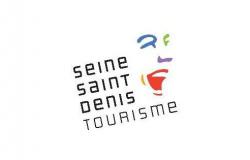The countdown has begun for the Livestock Summit teams. The 33rd edition will take place from October 1st to 4th at the Grande Halle d’Auvergne.
As proof of its international reach, more than 90 countries were represented at the Paris press conference organized less than four months before the 33rd Livestock Summit.
An economic and political meeting place, there will still be many things happening there and “new records are on the horizon,” says Fabrice Berthon, its general commissioner. “We are going to reach 1,600 exhibitors, we are fully booked.”
Despite a small frustration: not being able to welcome everyone. Among these exhibitors, 300 will come from around thirty countries.
Completely
“For the first edition, we had marketed 3,000 m² of stands and we have reached 97,000 m². That’s almost thirty-three times more in thirty-three editions?! In a difficult context, the Summit is doing more than just resisting, it is experienced and chosen by exhibitors as an essential event for the development of their activity,” he continues.
Fabrice Berthon
(General Commissioner of the Livestock Summit)
Seventy breeds of cattle, sheep and horses will be present, with more than 2,000 animals entered in the competitions and presentations. Among the meat breeds, the Salers will hold its national competition and, among the dairy breeds, the Simmental its European competition.
Guest of honor
For the past ten years, the Summit has also been an opportunity to honour a country. This time it will be the turn of Kazakhstan, the “giant of Central Asia”.
“There are a lot of opportunities and needs,” warns Benoît Delaloy, the Summit’s international manager. “Kazakhstan is five times the size of France,” recalls Jacques Chazalet, its president.
Cooperation between Kazakhstan and France goes back more than thirty years.
“It has continued to grow and enrich itself, transforming itself into a true strategic partnership, dynamic and flourishing in all key sectors. Moreover, I am proud to say that Kazakhstan is France’s only strategic partner in Central Asia.”
Gulsara Arystankulova
(Kazakhstan Ambassador to France)
Receive our eco newsletter by email and find out the latest news from economic players in your region.
Cooperation
His country is France’s leading supplier of uranium and second in crude oil. In addition to these raw materials, cooperation has the shared ambition of being extended, in particular to promising agricultural and agri-food sectors “which present a potential for growth and economic development, but also essential to ensure the food autonomy and sovereignty of the two countries”.
Joint projects have already been carried out and others are under consideration. “Flagships of the French agri-food industry such as Lactalis, Danone or Soufflet have been developing their activities in Kazakhstan for decades. A very eloquent example: Lactalis now occupies 50% of the Kazakhstani dairy market,” illustrates Gulsara Arystankulova.
The 33rd Livestock Summit will be held from October 1 to 4 at the Grande Halle d’Auvergne.
Breeding
Projects for the introduction of French cattle, sheep and goat breeds are also being implemented. “Modern and resilient agriculture, which today accounts for about 5% of GDP, is one of the priorities of the Kazakhstani government as part of its overall strategy for diversifying the national economy. And one of the main advantages and strengths of the country’s agriculture is its huge territory with a low population density, where vast agricultural land is always available. Kazakhstan has 220 million hectares of agricultural land. We are ranked 6th in the world in terms of agricultural area,” the ambassador continued.
The country has the capacity to raise up to 30 million cattle. However, currently only 30% of the pastures are used. Crops Livestock production is dominated by sheep, cattle and horse breeding. Camel breeding is widespread in desert and semi-desert areas. 30% of poultry meat consumed is imported.
Cultures
In terms of crops, Kazakhstan is one of the world’s leading wheat exporters. In 2022, a record year, grain production exceeded 22 million tonnes harvested, including 16.4 tonnes of wheat. Among oilseeds, the production and export of sunflower seeds are predominant. The country also grows rapeseed, corn, buckwheat, cotton, sugar beet, flax, rice, barley, oats and vegetable crops.
Kazakhstan will have a stand in the reception hall. A conference will address agriculture and livestock farming in the country on Tuesday morning, in the presence of French companies present on site. Visits to specific livestock farms will be offered to the delegation. The Minister of Agriculture of Kazakhstan is also expected in Clermont, with the hope of signing a cooperation agreement.
Tools to prepare your visit
Several practical tools have been added to prepare for your visit. “There is the appointment booking to optimize your time; a carpooling platform; we have also set up a platform where you can negotiate accommodation prices,” lists Victor Berthon, the Summit’s development manager. In order to find your way around the stands, it is also possible to geolocate yourself.
“To my knowledge, we have the first AI assistant dedicated to breeders, which we enrich with all the data from the event. For example, if I’m looking for something on cattle breeding, I enter my question as precisely as possible,” and the assistant provides the most relevant answers.
A “super channel” will also be created around live video, to offer “the best of the best”, following the example of the sports multiplex. Not forgetting the Comptoir des élevages which allows you to trade, inform and connect all year round.
Gaëlle Chazal





